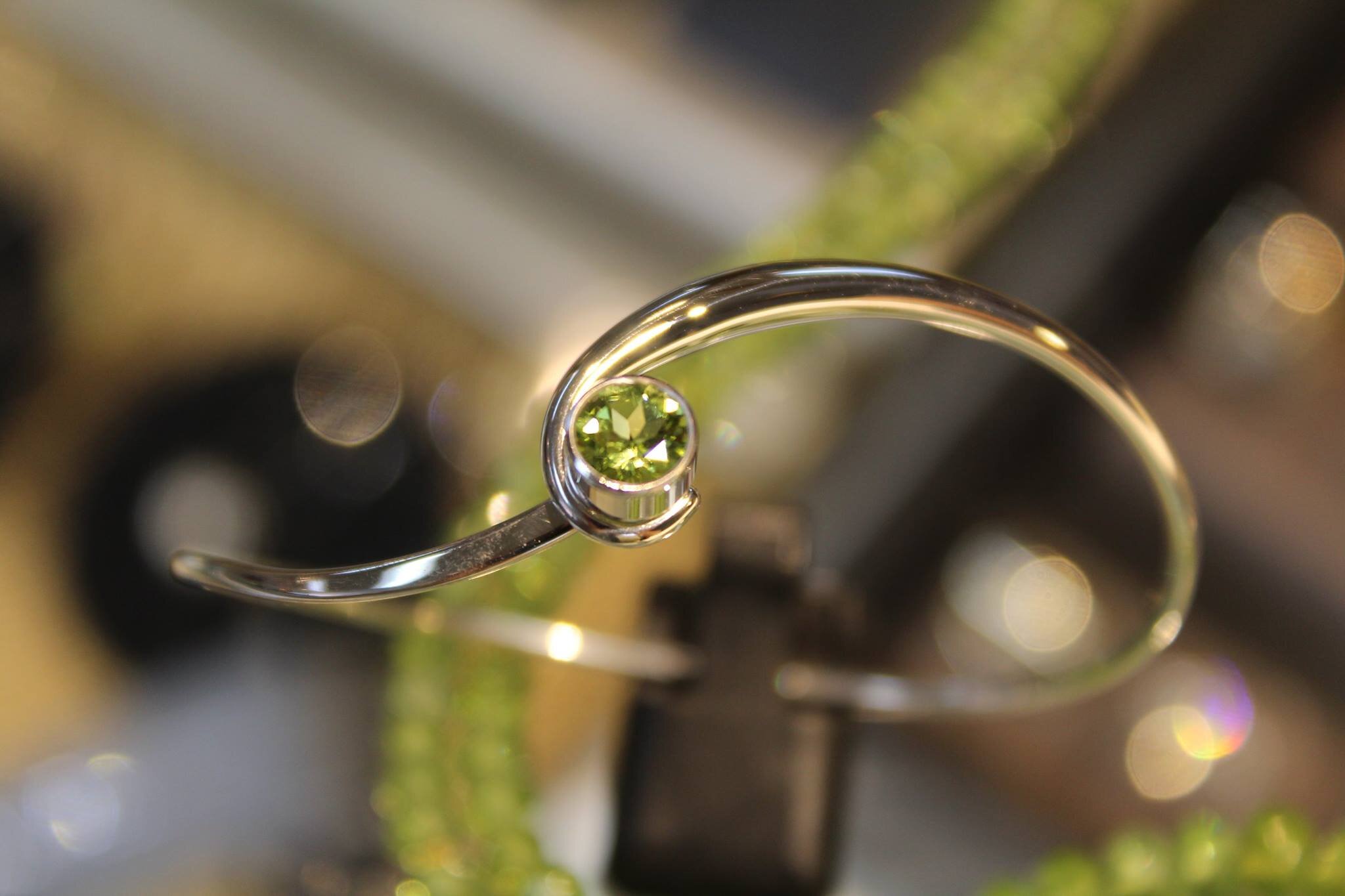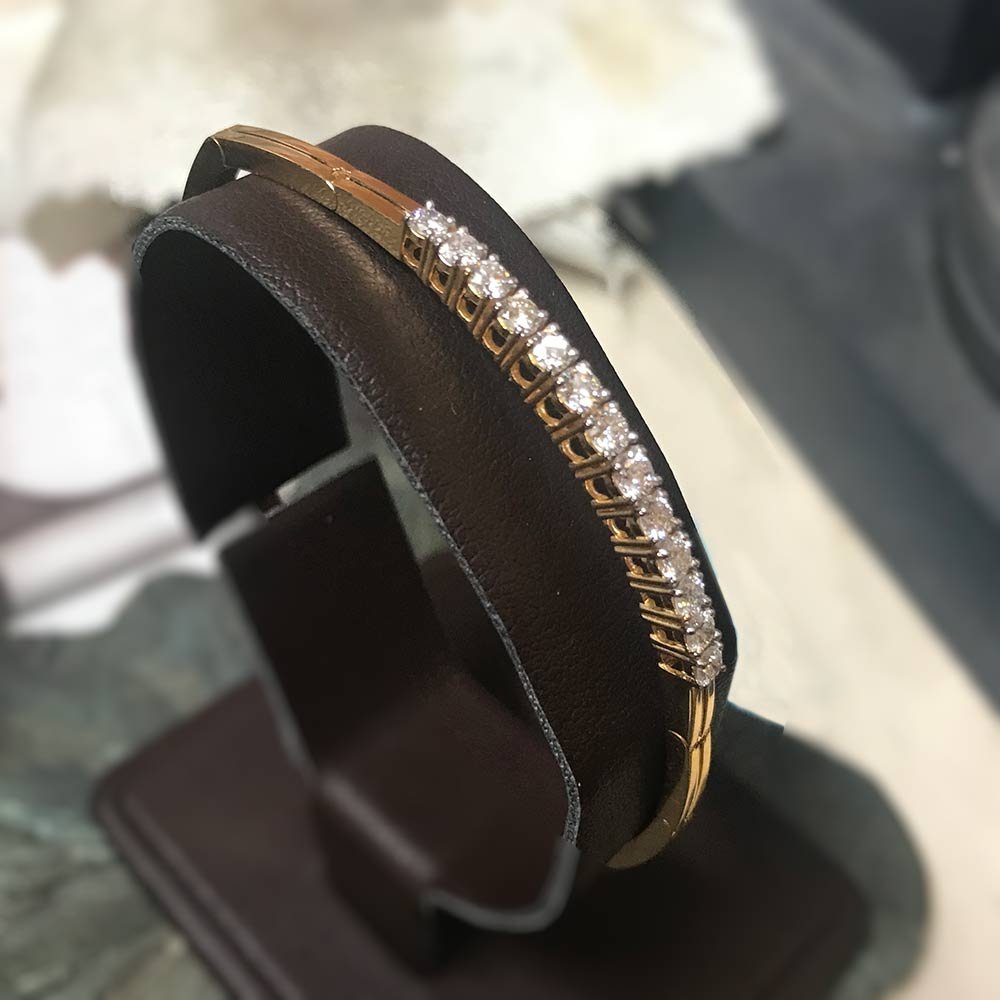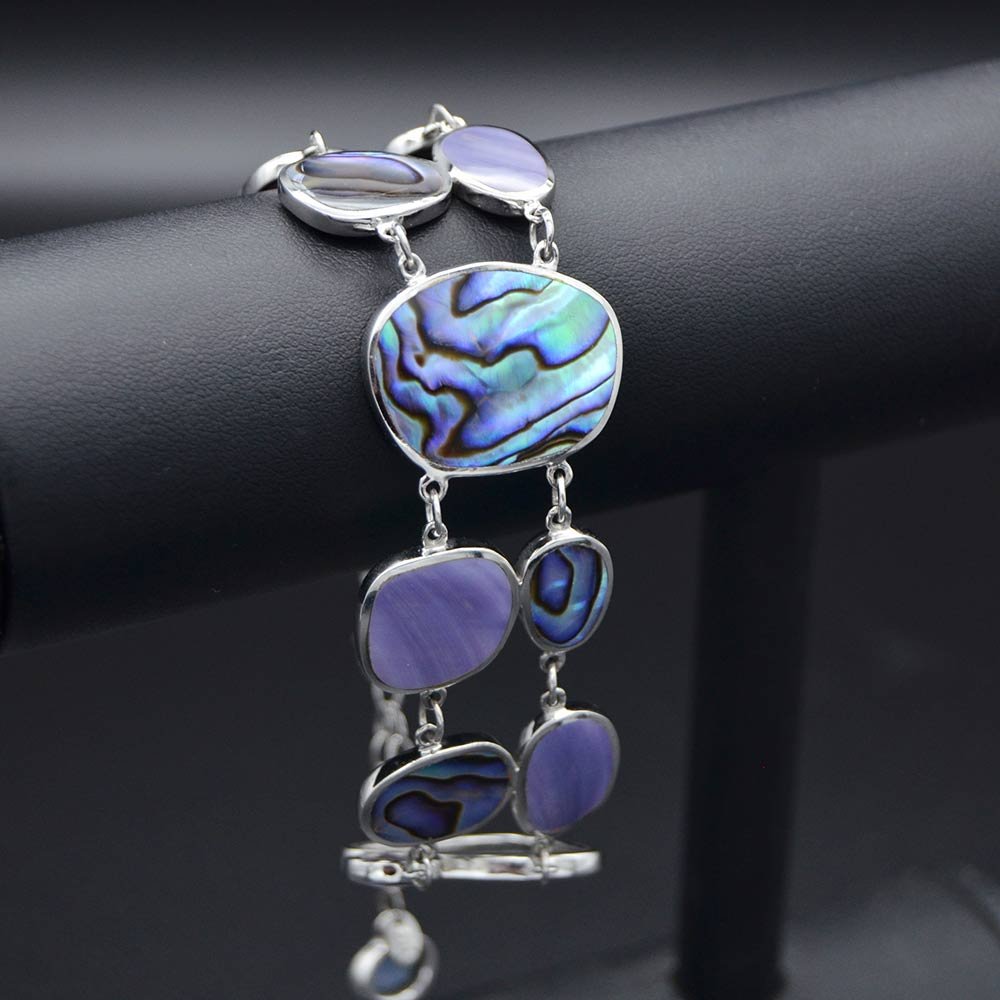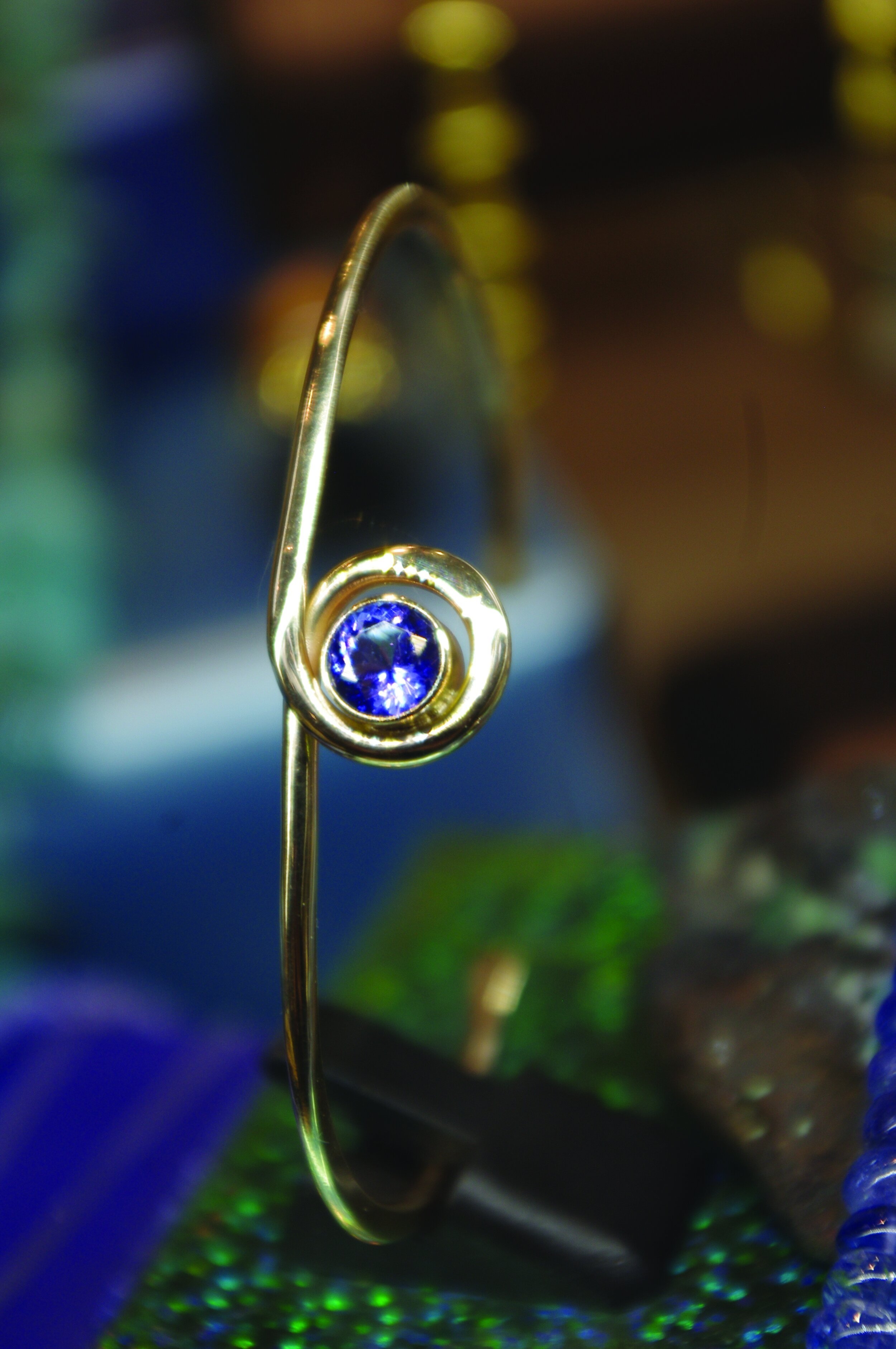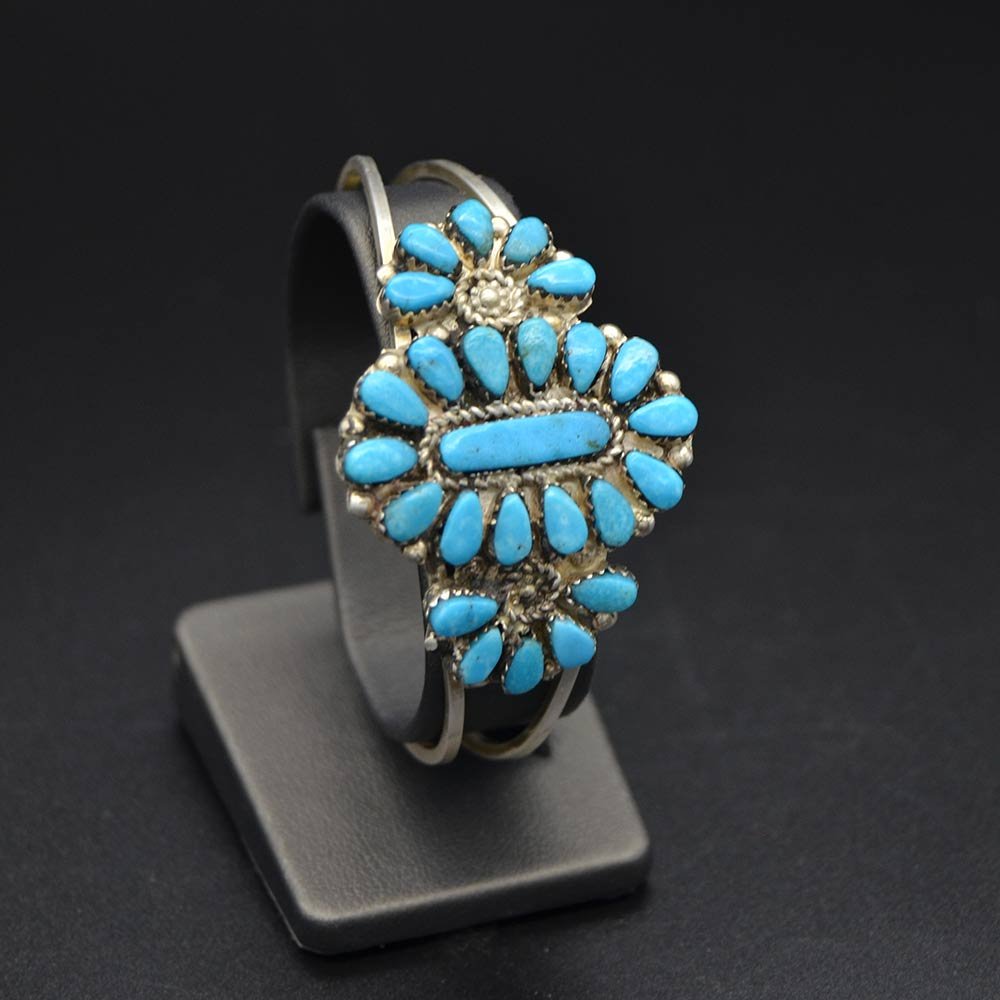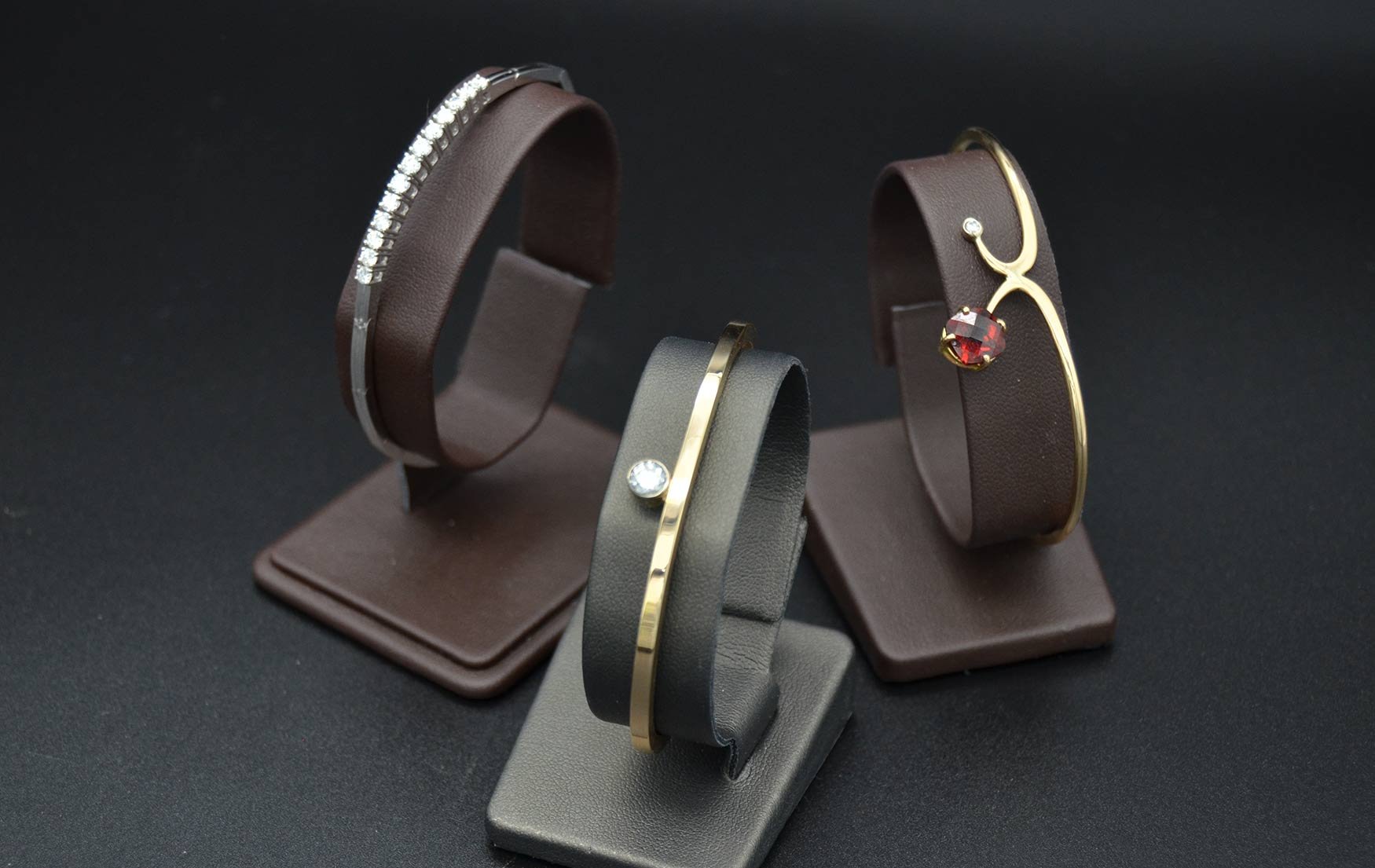The Ultimate Guide to Bracelets
After the ornaments for the neck, the next oldest form of jewelry is the bracelet for wrist, arm, or ankle. Many people may not realize the rich history and interesting symbolism of the bracelet.
The origin of the term 'bracelet' is from the Greek brachile meaning 'of the arm', via the Old French bracel, as well as the Latin word brachium, meaning simply "arm", and has been modified over time to represent the word we know as bracelet. A bracelet is also a small brace or bracer (an arm-guard used by archers). Although the term armlet may be technically similar, it is taken to mean an item that sits on the upper shoulder, or an arm ring.
Bracelets are cylindrical-shaped ornaments worn encircling the wrist or upper arm and have been one of the most popular forms of ornamentation since prehistoric times. Incredibly varied, bracelets are a universal form of jewelry. Historically and culturally, they have been worn singly or in multiples by both genders. Bracelets have been used for protective and decorative purposes, in rituals, as well as to indicate one's social status.
Types and Styles of Bracelets:
Styles of Bracelets
There are many different styles of bracelets and where they are worn on the body determines what they are called. For instance, bracelets worn above the elbow are called "armlets," and "anklets" when worn around the ankle. The main design consideration for a bracelet is sizing; it must be neither so large that it slips off the hand when it is relaxed, nor so small that it cannot be slid over the hand or fit around the wrist. Every period in history has had an impact on bracelet styles. Styles can range in complexity-from simply sawing off part of a mollusk shell to the intricate designs evident in East Asian metalworking. During the twentieth century, bangles, charm bracelets, and identification bracelets were some of the most popular styles.
In general, there are three different types of bracelets: link, slip-on, and hinged.
Link styles are sized to fit the wrist comfortably and to allow the links to drape flexibly.
Slip-on styles are rigid shapes, and may be either open-ended or a closed circle, or other shape. In the early twenty-first century, this is the most common style of the three types.
Hinged styles require a hinge and locking catch to allow the bracelet to be opened and yet fit the wrist snugly. The bracelet should have rounded ends in order to fit the wrist comfortably. Solid hinged bracelets should be made from a thick gauge of metal. Stones inserted in bracelets should rank at least 5 or 6 on the Mohs' scale, to prevent their damage.
Types of Bracelets
Bangles
Bangles are rigid bracelets with no closures, and may be worn singly or in multiples. Most bangles are made from bold colors or are decorated with numerous types of repeating motifs. They can be smooth, textured or set with stones. In India, glass bangles are common. Made from ordinary glass that is about 3 to 6 millimeters (1⁄8 to 1⁄4 in) in width, they are worn in groups so that arm movement causes them to make a gracious sound rather like the clinking of wind chimes. In India, it is also common that young children will wear thin gold bangles on their hands and ankles.
Tennis Bracelets
Tennis bracelets are made up of many identical settings, each of which incorporates a hinge. The links are usually riveted or soldered from the sides of the bracelet allowing it to flex freely around the wrist with minimal movement left-to-right. A typical tennis bracelet will feature round diamonds set in four claw settings. Tennis bracelets can be adjusted to fit the wearer by removing links, and must be done by a jeweler. While playing a match at the 1978 U.S. Open, tennis player Chris Evert was wearing a diamond line bracelet, which fell from her wrist to the surface of the court. She said about this, "I dropped my tennis bracelet", and since then diamond line bracelets have also been called "tennis bracelets".
Penannular or Cuff Bracelets
Penannular, or Cuff, bracelets are made as an incomplete circle and are very common form for bracelet. These are usually made in a single piece of a slightly flexible material such as metal or plastic. It is particularly popular in gold. These can also be accented with precious or semi-precious gemstones.
Beaded Bracelets
Beaded bracelets are usually made from loose beads with a center hole and connected by a piece of string or elastic band through the holes. Most often made with wooden beads, plastic, glass or even crystal beads.
Link Bracelets
Link bracelets are made from connecting or linking various or similar components or jewelry findings. Link bracelets can be made of a variety of materials including metals and gemstones.
Charm Bracelet
A charm bracelet carries personal charms: decorative pendants or trinkets which are signifiers of important things, interests/hobbies, and memories in the wearer's life. The decorative charms usually carry personal or sentimental attachment by the owner. They are popular with all age ranges, but especially for children.
Charm bracelets are a special and unique type of jewelry with a long history dating back to Ancient Egypt. Charms were meant to ward off evil or to endow the wearer with special powers. The original charm bracelet was the Egyptian eye bead, attached to a circlet, used to charm, fascinate, or reflect the malevolent intention of others. Its spiritual function became so popular, it was adopted by neighboring cultures, and it is still worn today in many Middle Eastern countries.
In the United States, charm bracelets gained popularity during World War II. Made of silver, gold, or silver-plated metals, enamel, plastic, and shell, most were inexpensive and mass-produced. The charms included military insignia, flags, planes, and wings worn by women in recognition of those serving in the armed forces. Postwar prosperity turned the inexpensive charm bracelets into fine quality jewelry made of medium to heavy gold links on which charms could be attached.
In the late 1950s, charms representing one's travel experiences became fashionable, and there is still a wide range of charms available. Like quilts, letters, and journals, these types of bracelets have a narrative quality that define some of the more important moments in a woman's life, or share information about her values, beliefs, interests, and personality.
In recent history, Italian charm bracelets have become trendy. While traditional charms dangle, Italian charms feature individual pieces soldered flat onto the surface of the link.
Other Types of Bracelets
Slap bracelets were a popular “fad” in the late 1980s and early 1990s. These are flat, felt-covered metal strips that curved around one's wrist when gently hit against it. Often adorned with neon colors and vivid graphics, these bracelets could be found at inexpensive retailers. A false rumor emerged that "slap bracelets" caused bleeding and puncture wounds and thus they fell out of style.
Sports bracelets use a colored silicone rubber as a material and was popularized by Nike and Lance Armstrong through the Yellow Livestrong wristband starting in May 2003. Their success has led to the silicone bracelet becoming a low cost tool for various awareness, information, and charity campaigns. This can be likened to the use of awareness ribbons for similar purposes. These bracelets are also known as "baller id bands", "baller bands" or "wristbands". They can also be referred to as rubber wristbands, silicone wristbands or gel wristbands. For sport climbing, bracelets are designed with climbing cords (dynamic rope) to serve as a mountain climbing gear.
Identification, or ID, bracelets are twentieth-century link bracelets with text engraved onto a flat metal plate. The text could be one's name or nickname, or it could contain important information about an individual's medical condition. One fashion trend in the United States has been stylish medical-alert bracelets, which have the primary function of alerting medical professionals to special medical considerations like diabetes or an allergy to penicillin. In the early 2000s, they also have an aesthetic appeal, as some of these bracelets are made with crystal, sterling silver, and 14-karat gold-filled beads, hooked onto a stainless steel medical-alert tag.
Materials of Bracelets:
Grass, Rattan, Tree limbs and Wood
Copper, Brass and Bronze
Silver and Gold
Insect secretions
Feathers, and Leather
Stone
Teeth, Tusks, and Horns
Mother-of-Pearl, Shells, and Beads
Yarns made of Cotton, Silk, Wool, or Metallic Fibers
Soft or Hard Glass
Materials Used in Bracelets
Materials for bracelets are innumerable.
The earliest bracelets were often made of grass, tree limbs, and shells, with some even being made from animal bones or stones.
After this, bracelets were commonly made of copper or bronze, and this evolved, after the Bronze Age, into gold and silver.
Silver is the most common bracelet material today because it is so soft and can easily be shaped to any design. However, the most common material used for inlaid or set gemstones is gold. When it comes to wearing precious and semi-precious gemstones (such as birthstones), gold is used primarily as the base metal because of its density and hardness in protecting gemstones. Allowing the wearer to showcase their birthstone on their wrist is a tradition that has lasted since ancient times.
People from all cultures across the globe have used indigenous or imported materials, man-made, and natural materials to make them. While the majority are made from metals, they also have been made from insect secretions (such as lac), rattan, wood, feathers, tortoiseshell, horn, teeth, tusks, feathers, leather, and stone. Man-made materials include glass, faience, enamel, ceramic, and plastic. Ancient Egyptians used bone and pebbles, adorned with finely worked beads and pendants of jasper, turquoise, alabaster, lapis lazuli, cornelian, and feldspar.
In Eastern cultures, folk jewelry was often made of horn, brass, beads, and copper, while more expensive and finer quality bracelets were designed of mother-of-pearl, gold, and silver.
Skillful jewelers in China were able to make bracelets cut from a single piece of jade. In India, the patwa (jewelry maker) often creates bracelets from braiding, knotting, twisting, or wrapping yarns made of cotton, silk, wool, or metallic fibers.
In the early 2000s bracelets are being made of soft or hard glass (such as borosilicate). While these glass bracelets can be made from molds or be free-formed, the latter process is slower and not nearly as precise. Micro-electronics used in some modern bracelets can now produce movement, light, and sound.

